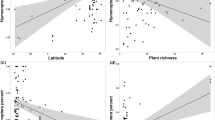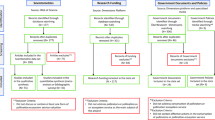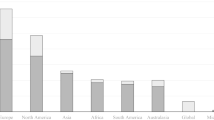Abstract
Creating or restoring habitat is a well-established approach to improve pollinator populations. Rural and exurban properties might constitute a straightforward opportunity to convert land to native plants that are beneficial to pollinators given that, in Ohio, these parcels typically contain substantial lawn cover. The purpose of this study is to gauge the public’s acceptance of planting native plants on low-density rural properties. Out of 7557 properties in Butler County, Ohio (U.S.A.), that had at least ¼ acre lawn, were between 1 and 20 acres, and had a dwelling, 200 were randomly selected to receive a survey; half via the drop-off pick-up method and half via mail (for a combined 58% response rate). Pollinator beneficial plants of differing appearance, management, and pollinator service were shown in the questionnaire: Echinacea purpurea, Monarda fistulosa, Asclepias syriaca, and wildflower prairie (multiple species). Respondents were significantly less likely to be willing to plant Asclepias syriaca compared to the other plants shown. If all respondents planted what they said they would consider planting in the more accepted plants, these potentially new plantings would cover 5.4% of the 146.2 km2 devoted to these rural and exurban parcels in the county. However, that proportion decreases to 1% if we only take into account those that said they would make those changes within the year. We discuss what we see as challenges and opportunities to increase pollinator plantings on exurban properties and small working farms in the Midwest. We also describe implications for voluntary habitat restoration on these private lands.




Similar content being viewed by others
Data availability
The unidentified survey results are available upon request to the primary author.
References
Adamson NL, Borders B, Cruz J, Jordan SF, Gill K, Hopwood J, Lee-Mäder D, Minnerath A, Vaughan M (2017) Pollinator plants Great Lakes region. Xerces Society for Invertebrate Conservation. Serial Number 17–047. https://xerces.org/sites/default/files/2018-05/17-047_03_XercesSoc_Pollinator-Plants_Great-Lakes-Region_web-4page.pdf
Baker AM, Potter DA (2020) Invasive paper wasp turns urban pollinator gardens into ecological traps for monarch butterfly larvae. Nat Sci Rep 10(1):1–7
Bates D, Mächler M, Bolker B, Walker S (2015) Fitting linear mixed-effects models using lme4. J Stat Softw 67(1):1–48. https://doi.org/10.18637/jss.v067.i01
Borders B, Lee-Mäder E (2014) Milkweeds: A Conservation Practioner’s Guide. 146pp. The Xerces Society for Invertebrate Conservation, Portland, OR
Brown MJF, Paxton RJ (2009) The conservation of bees: a global perspective. Apidologie. 40(3):410–416
Burr A, Hall DM, Schaeg N (2018) The perfect lawn: exploring neighborhood socio-cultural drivers for insect pollinator habitat. Urban Ecosyst 21(6):1123–1137
Cavender-Bares J, Padullés Cubino J, Pearse WD, Hobbie SE, Lange AJ, Knapp S, Nelson KC (2020) Horticultural availability and homeowner preferences drive plant diversity and composition in urban yards. Ecol Appl 30(4):e02082
Chen W, Jim C (2008) Assessment and valuation of the ecosystem services provided by urban forests, 53–83 in (Eds Carreiro, M.M., Song, Y.C., and J. Wu), Ecology, Planning and Management of Urban Forests: International Perspectives, Springer, New York 456 pp
Chowdhury R, Larson K, Grove M, Polsky C, Cook E, Onsted J, Ogden L. (2011) A multi-scalar approach to theorizing socio-ecological dynamics of urban residential landscapes. Cities and the Environment (CATE) 4(1):6. https://digitalcommons.lmu.edu/cate/vol4/iss1/6
Conway TM (2016) Tending their urban forest: residents’ motivations for tree planting and removal. Urban For Urban Green 17:23–32
Cook EM, Hall SJ, Larson KL (2012) Residential landscapes as social-ecological systems: a synthesis of multi-scalar interactions between people and their home environment. Urban Ecosyst 15(1):19–52
Core Team R (2016) R: a language and environment for statistical computing. R Foundation for statistical computing, Vienna, Austria URL https://www.R-project.org/
Derby Lewis AD, Bouman MJ, Winter A, Hasle E, Stotz D, Johnston MK, Czarnecki C (2019) Does nature need cities? Pollinators reveal a role for cities in wildlife conservation. Front Ecol Evol 7:220
Dillman DA, Smyth JD, Christian LM (2014) Internet, mail, and mixed-mode surveys: the tailored design method (Fourth ed.). John Wiley, Hoboken, NJ
Ellsworth D (2015) Ohio trees for bees. The Ohio State University extension. ENT-71. Retrieved 06-28-2019, https://ohioline.osu.edu/factsheet/ent-71
Fox J, Weisberg S (2011) An {R} companion to applied regression, Second Edition. Sage, Thousand Oaks CA URL: http://socserv.socsci.mcmaster.ca/jfox/Books/Companion
Garbuzov M, Fensome KA, Ratnieks FL (2015) Public approval plus more wildlife: twin benefits of reduced mowing of amenity grass in a suburban public park in Saltdean, UK. Insect Conserv Divers 8(2):107–119
Garibaldi LA, Steffan-Dewenter I, Kremen C, Morales JM, Bommarco R, Cunningham SA, Klein AM (2011) Stability of pollination services decreases with isolation from natural areas despite honey-bee visits. Ecol Lett 14(10):1062–1072
Gels JA, Held DW, Potter DA (2002) Hazards of insecticides to the bumble bees Bombus impatiens (Hymenoptera: Apidae) foraging on flowering white clover in turf. J Econ Entomol 95(4):722–728
Glass GV, Peckham PD, Sanders JR (1972) Consequences of failure to meet assumptions underlying the fixed effects analyses of variance and covariance. Rev Educ Res 42(3):237–288
Guo T, Morgenroth J, Conway T (2019) To plant, remove, or retain: Understanding property owner decisions about trees during redevelopment. Landsc Urban Plan 190:103601
Hall DM, Camilo GR, Tonietto RK, Ollerton J, Ahrné K, Arduser M et al (2017) The city as a refuge for insect pollinators. Conserv Biol 31(1):24–29
Harrell FE Jr, with contributions from Charles Dupont and many others (2020) Hmisc: Harrell Miscellaneous. R package version 4.4-0. https://CRAN.R-project.org/package=Hmisc
Hope RM (2013) Rmisc: Rmisc: Ryan miscellaneous. R package version 1.5. https://CRAN.R-project.org/package=Rmisc
Hope D, Gries C, Zhu WX, Fagan WF, Redman CL, Grimm NB, Nelson AL, Martin C, Kinzig A. (2003) Socioeconomics drive urban plant diversity. Proc Natl Acad Sci USA 100:8788–8792. https://doi.org/10.1073/pnas.1537557100
Hothorn T, Bretz F, Westfall P (2008) Simultaneous inference in general parametric models. Biom J 50(3):346–363
IPBES (2016) The assessment report of the intergovernmental science-policy platform on biodiversity and ecosystem services on pollinators, pollination and food production. In: Potts SG, Imperatriz-Fonseca VL and Ngo HT (eds), Secretariat of the Intergovernmental Science-Policy Platform on Biodiversity and Ecosystem Services, Bonn, p 552. https://doi.org/10.5281/zenodo.3402856
Johnston MK, Hasle EM, Klinger KR, Lambruschi MP, Derby Lewis A, Stotz DF, Winter AM, Bouman MJ, Redlinski I (2019) Estimating milkweed abundance in metropolitan areas under existing and user-defined scenarios. Front Ecol Evol 7:210
Kendal D, Williams KJ, Williams NS (2012) Plant traits link people’s plant preferences to the composition of their gardens. Landsc Urban Plan 105(1–2):34–42
Kirkpatrick JB, Davison A, Daniels GD (2012) Resident attitudes towards trees influence the planting and removal of different types of trees in eastern Australian cities. Landsc Urban Plan 107(2):147–158
Kuznetsova A, Brockhoff PB, Christensen RHB (2017) lmerTest package: tests in linear mixed effects models. J Stat Softw 82(13):1–26. https://doi.org/10.18637/jss.v082.i13
Larsen L, Harlan SL (2006) Desert dreamscapes: residential landscape preference and behavior. Landsc Urban Plan 78(1):85–100
Larson JL, Redmond CT, Potter DA (2013) Assessing insecticide hazard to bumble bees foraging on flowering weeds in treated lawns. PLoS One 8(6):e66375
Larson JL, Kesheimer AJ, Potter DA (2014) Pollinator assemblages on dandelions and white clover in urban and suburban lawns. J Insect Conserv 18:863–873
Lerman SB, Contosta AR, Milam J, Bang C (2018) To mow or to mow less: Lawn mowing frequency affects bee abundance and diversity in suburban yards. Biol Conserv 221:160–174
Lindemann-Matthies P, Junge X, Matthies D (2010) The influence of plant diversity on people’s perception and aesthetic appreciation of grassland vegetation. Biol Conserv 143(1):195–202
Locke DH, Roy Chowdhury R, Grove JM, Martin DG, Goldman E, Rogan J, Groffman P (2018) Social norms, yard care, and the difference between front and back yard management: examining the landscape mullets concept on urban residential lands. Soc Nat Resour 31(10):1169–1188
Lowenstein DM, Minor ES (2016) Diversity in flowering plants and their characteristics: integrating humans as a driver of urban floral resources. Urban Ecosyst 19(4):1735–1748
Ludman SW, Boyle RJ (2015) Stinging insect allergy: current perspectives on venom immunotherapy. J Asthma Allergy 8:75
Mach BM, Potter DA (2018) Quantifying bee assemblages and attractiveness of flowering woody landscape plants for urban pollinator conservation. PLoS One 13(12):e0208428
MacIvor JS, Cabral JM, Packer L (2014) Pollen specialization by solitary bees in an urban landscape. Urban Ecosyst 17(1):139–147
Minor E, Belaire JA, Davis A, Franco M, Lin M (2016) Socioeconomics and neighbor mimicry drive yard and neighborhood vegetation patterns, 56–74. In: Francis RA, Millington JDA, Chadwick MA (eds) . Urban Landscape Ecology: Science, Policy and Practice, Routledge
Monarch Joint Venture (n.d.). Partnering across the U.S. to conserve the monarch migration. Retrieved 06-28-2019, https://monarchjointventure.org/images/uploads/documents/MonarchMisconceptions.pdf
Nassauer JI, Wang Z, Dayrell E (2009) What will the neighbors think? Cultural norms and ecological design. Landsc Urban Plan 92(3–4):282–292
Nassauer JI, Cooper DA, Marshall LL, Currie WS, Hutchins M, Brown DG (2014) Parcel size related to household behaviors affecting carbon storage in exurban residential landscapes. Landsc Urban Plan 129:55–64
Nielson L, Smith CL (2005) Influences on residential yard care and water quality: Tualatin watershed, Oregon. JAWRA J Am Water Resour Assoc 41:93–106
Ollerton J, Winfree R, Tarrant S (2011) How many flowering plants are pollinated by animals? Oikos 120(3):321–326
Padullés Cubino J, Avolio ML, Wheeler MM, Larson KL, Hobbie SE, Cavender-Bares J et al (2020) Linking yard plant diversity to homeowners’ landscaping priorities across the US. Landsc Urban Plan 196:103730
Pincetl S (2010) From the sanitary city to the sustainable city: challenges to institutionalizing biogenic (nature’s services) infrastructure. Local Environ 15(1):43–58
Polsky C, Grove JM, Knudson C, Groffman PM, Bettez N, Cavender-Bares J et al (2014) Assessing the homogenization of urban land management with an application to US residential lawn care. Proc Natl Acad Sci PNAS 111(12):4432–4437
Potts SG, Biesmeijer JC, Kremen C, Neumann P, Schweigerand O, Kunin WE (2010) Global Pollinator Declines: Trends, Impacts and Drivers. Trends Ecol Evol 25(6):345–353. https://doi.org/10.1016/j.tree.2010.01.007
Ramer H, Nelson KC, Spivak M, Watkins E, Wolfin J, Pulscher M (2019) Exploring park visitor perceptions of ‘flowering bee lawns’ in neighborhood parks in Minneapolis, MN, US. Landsc Urban Plan 189:117–128
Robbins P (2007) Lawn people: how grasses, weeds, and chemicals make us who we are. Temple University Press, Philadelphia
Robinson DT (2012) Land-cover fragmentation and configuration of ownership parcels in an exurban landscape. Urban Ecosyst 15(1):53–69
Sisser JM, Nelson KC, Larson KL, Ogden LA, Polsky C, Chowdhury RR (2016) Lawn enforcement: how municipal policies and neighborhood norms influence homeowner residential landscape management. Landsc Urban Plan 150:16–25
Southon GE, Jorgensen A, Dunnett N, Hoyle H, Evans KL (2017) Biodiverse perennial meadows have aesthetic value and increase residents’ perceptions of site quality in urban green-space. Landsc Urban Plan 158:105–118
Spivak M, Mader E, Vaughan M, Euliss NH (2011) The plight of the bees. Environ Sci Technol 45(1):34–38
The Bee and Butterfly Habitat Fund. (n.d.) Retrieved 07-03-2019, https://beeandbutterflyfund.org/
Thogmartin WE, López-Hoffman L, Rohweder J, Diffendorfer J, Drum R, Semmens D et al (2017) Restoring monarch butterfly habitat in the Midwestern US:‘all hands on deck’. Environ Res Lett 12(7):074005
U.S. Department of Agriculture. 2011. Plants poisonous to livestock in the Western States. By K.E. Panter, M.H. Ralphs, J.A. Pfister, D.R. Gardner, B.L. Stegelmeier, S.T. Lee, K.D. Welch, B.T. Green, T.Z. Davis, and D. Cook. Washington: Government Printing Office. (United States Department of Agriculture Bulletin no. 415)
USDA, NRCS. (2019) The PLANTS database (retrieved 01-21-2019, http://plants.usda.gov). National Plant Data Team, Greensboro, NC 27401-4901 USA
Visscher RS, Nassauer JI, Brown DG, Currie WS, Parker DC (2014) Exurban residential household behaviors and values: influence of parcel size and neighbors on carbon storage potential. Landsc Urban Plan 132:37–46
Visscher RS, Nassauer JI, Marshall LL (2016) Homeowner preferences for wooded front yards and backyards: implications for carbon storage. Landsc Urban Plan 146:1–10
Westerhold CM, Wortman S, Todd K, Golick D (2018) Knowledge of pollinator conservation and associated plant recommendations in the horticultural retail industry. HortTechnology 28(4):529–535
Wickham H (2009) ggplot2: elegant graphics for data analysis. Springer, New York
Wilson JS, Forister ML, Carril OM (2017) Interest exceeds understanding in public support of bee conservation. Front Ecol Environ 15(8):460–466
Acknowledgements
This research was supported by the NSF’s REU Site: “The Ecology of Human-Dominated Landscapes” (DBI-1460518), as well as Miami University College of Arts and Sciences funds. Alec Iruri-Tucker contributed to data collection and entry and was funded through this REU. Thank you to Dr. Ann Rypstra, Dr. Michelle Boone, and Janine Batdorf for feedback on the survey questions and design. We greatly appreciate Debra White for her assistance in printing address labels and checking survey packets. The authors also wish to extend our gratitude to Zoey Scancarello for classifying if the patches were in the front/side/backyards, as well as Dr. Emily Minor for feedback on earlier versions of this manuscript. Lastly, we also wish to thank the residents of Butler County, OH who consented to participate in this project and took time out of their busy lives to answer the survey questions.
Funding
This research was supported by the NSF’s REU Site: “The Ecology of Human-Dominated Landscapes” (DBI-1460518), as well as Miami University College of Arts and Sciences funds.
Author information
Authors and Affiliations
Contributions
All authors contributed to the study conception and design. Material preparation and data collection were performed by Olivia Herron, and Alec Iruri-Tucker. Data analysis was performed by Amélie Davis. The introduction was written by Olivia Herron and Amélie Davis; the rest of the manuscript was written by Amélie Davis. All authors commented on previous versions of the manuscript.
Corresponding author
Ethics declarations
Conflicts of interest/competing interests
The authors report no conflicts of interest.
Code availability
The R code is available upon request to the primary author.
Supplementary Information
ESM 1
(DOCX 36 kb)
Rights and permissions
About this article
Cite this article
Davis, A., Herron, O. & Dumyahn, S. Uncovering the potential for exurban properties and small working farms in the Midwestern United States to provide food and refuge for pollinators. Urban Ecosyst 24, 1047–1060 (2021). https://doi.org/10.1007/s11252-021-01094-7
Accepted:
Published:
Issue Date:
DOI: https://doi.org/10.1007/s11252-021-01094-7




